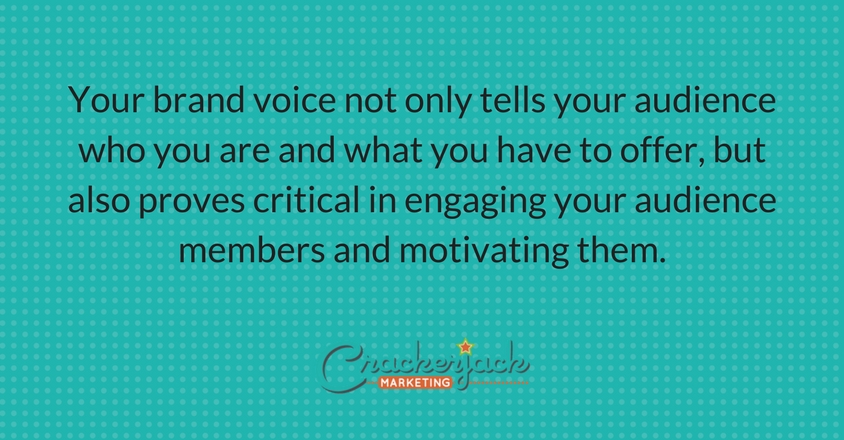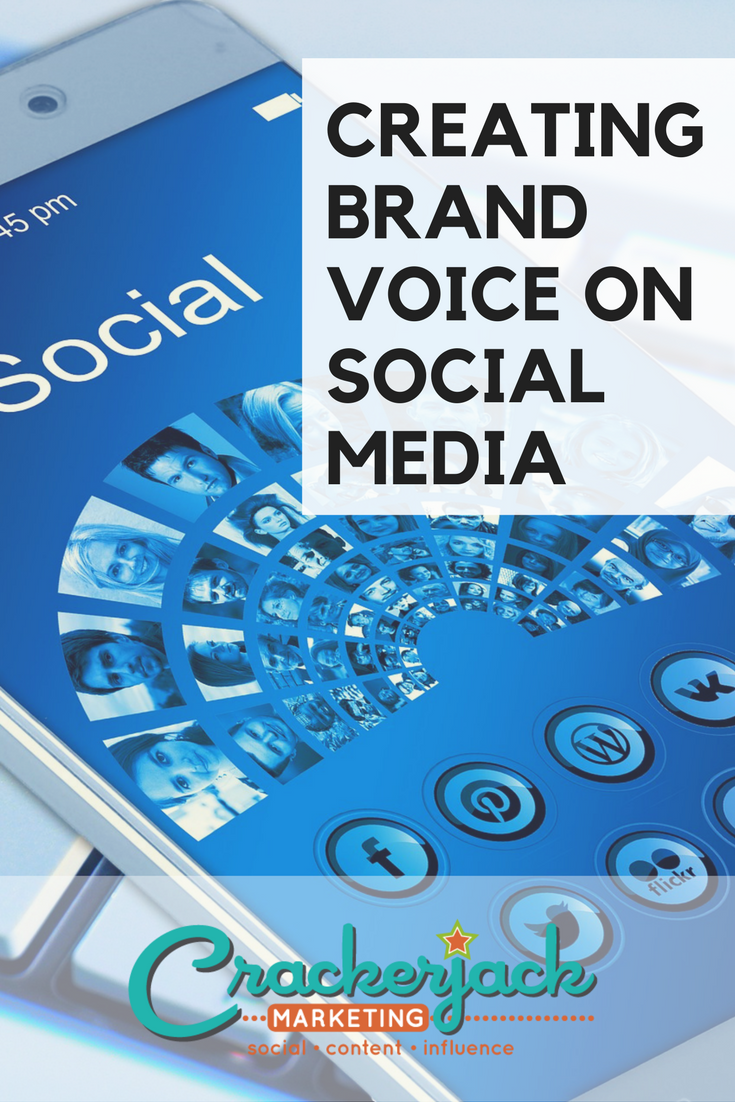Creating Brand Voice on Social Media
“Building and Protecting Your Brand Voice on Social Media” was co-authored by Stephanie Schwab and Christina Strickland
Every brand needs a strong brand voice. What is brand voice, you ask? Essentially, it’s the tone and style you use when communicating with your audience. Your brand voice not only tells your audience who you are and what you have to offer, but also proves critical in engaging your audience members and motivating them. Your brand voice gives your audience a feel for your brand’s personality, and since the explosion and rapid growth of social media marketing, it’s become more important than ever before.
That Was Then
Years ago, before social media marketing gave us another highly effective way of reaching audiences, businesses broadcast mass marketing messages to consumers through radio, television and magazine ads. Consumers far and wide received the same generic message. That brief message was delivered in a 30 second spot or a half-page ad. Essentially, marketers used a handful of words to reach everyone.
It’s understandable that with those constraints, it was incredibly hard to show personality. Of course, there were ways to make it happen. If you had a large marketing budget to fund a high-end ad agency and lots of media spend, you could make an attempt at telling a story with consistent characters, celebrities, or rarely, a real person from the company (like Dave Thomas from Wendy’s).
The fact of the matter is that many brands simply didn’t have the budget to show personality, but showing personality is critical. Why? Well, think about it. Great brands stand for something, don’t they? You know what to expect when you walk into a McDonald’s, when you buy a Harley Davidson motorcycle, or when you call a customer service representative at Zappos. And when you’re talking to a representative of a brand on Facebook, via Twitter, or watching them in a video, you expect that person to speak with the brand’s voice.
Do you expect the NPR Twitter feed to sound snarky? Of course not! And as for the Gap Facebook page? If their posts came off sounding snooty and intellectual, you’d wonder if you’d somehow clicked into The Twilight Zone.
This Is Now
Today, businesses put lots of different people to work engaging on behalf of their brands on Facebook, Twitter, and other social media platforms, and more often than not, via a blog too. These people are checking in regularly, answering questions, sharing inside stories, personally recognizing individual customers, inspiring their audiences and becoming an integral part of the community they serve. This differs greatly from the radio spots and display ads of yesterday. Each one of these representatives must use their specific brand’s voice every single day.
As an entrepreneur who started a business based on your own passion and interest in your product, service or company, your brand voice is probably part of the natural way you talk to your consumers. It’s easy for you to talk and write in your brand voice. With social media as such an important part of your marketing strategy, however, you need others in your organization to engage with your audience using that same brand voice and do so not only convincingly but also consistently.
Build Your Brand Voice
Every tweet, every Facebook status and every blog post says something about your brand. Everything you post sends a message about who you are, what you care about and how much you care about your fans or followers.
- Define your brand voice. Your team can’t use it if they don’t know what it is. Is your brand voice bold, inspiring, humble snarky, playful, sassy, loud, or honest? Clearly define your unique brand voice so that your team can speak and write with it.
- Take a look at the competition and their brand voices. Differentiate your brand voice enough that you stand out from the competition.
- Listen to your audience members. How do they speak and write? Make sure your brand voice is a good match for them. You don’t want to speak in a highly formal voice if your audience is very casual or playful.
- Document the words, phrases and tone that you expect your brand voice to sound like. Your team will be much more effective if you provide them with guidelines and examples to follow.
- Guide your team in writing tweets, social media posts, and blog posts in your unique voice. This will take some work on your part at first, but eventually, your team will begin to think in your brand voice, and writing in it will become second nature. Keep a close eye on their work until you’re fully comfortable that they’re speaking and writing in the right voice for your brand.
Protect Your Brand Voice
It’s critical to both recognize that your brand voice isn’t static and protect your brand voice at the same time. Your brand voice isn’t meant to be perfect and stay exactly the same over the years. It will, and should, evolve with your audience and changes in your goals and strategies. That’s okay and to be expected. What’s not okay is a team that goes off the rails and fails to communicate using your brand voice.
Address and correct mistakes consistently. It’s never a good idea to leave your brand voice in the hands of others without close oversight. People make mistakes, and if you don’t offer constructive feedback, they will continue to make them. Remember, your reputation, and ultimately, your success is at stake, so it’s up to you to keep your team on track.
Establish a Brand Character
For as much as you’re paying attention to brand voice, you’ll also want to project the right brand character, which is an image your audience will have of you based on your brand voice and the way you use social media.
So what’s your brand character and are you moving in the right direction? You can learn a lot from looking through your past updates in each of your social media channels. It doesn’t take long to notice that a pattern begins to develop based on your timing, tone of voice and types of content. Each of these combined together becomes your brand’s character.
Unfortunately, some characters are bound to miss the mark in social media. For example:
The Magician
This character has an amazing disappearing act! He’ll post, maybe even a few days or months in a row, and then ‘poof! He’s gone! You never know when he’ll reappear, but he does at some point.
The Infomercial Guy
You’ve got to buy my stuff! Seriously, have you seen all the great things my stuff can do? You can’t live without my stuff! While those may not be his exact words, that’s the message. His updates are constantly self-promotional and non-stop!
The Motor Mouth
She’s constantly talking and most of the time it’s far off-topic. She’ll tell you what she had for lunch, what the weather is like outside and what her plans are for each moment of the day. Her updates are not well balanced with her brand’s identity.
The Radio Announcer
It’s a one-way conversation with this character. She loves to send out tweets, Facebook updates and blog posts, but don’t expect her to respond. She’s not out for conversation; she only wants to make sure you get his message!
The Right Brand Character
We’ve given you brand characters to avoid, and now, we’ll share the right brand character. This character almost always hits the target, delivering the right message, at the right time. We call her The Mindful Maven.
The Mindful Maven
Her messages are consistent, clear and well-balanced. You’ll find her sending updates about her brand, yes, but not nearly as often as sharing other content she thinks will be interesting and relevant to the fans that follow her brand. And while she’s not detailing out every moment of her day, she wants to chat with you too. You’ll find her responding to comments, answering questions and joining in the conversation.
As you start to create your brand’s identity in the social media space, be sure that your character most closely matches that of Mindful Maven. You should have your own unique personality, but you want to make sure you’re hitting that sweet spot every time!
Building and protecting your brand voice is a critical but ongoing process. Use the advice above to create the right voice for your brand and engage, motivate, and inspire your audience.
Related posts:
Crackerjack Marketing
Latest posts by Crackerjack Marketing (see all)
- Championing Representation and Equality: Why Diverse Buyer Personas Are Important - February 24, 2023
- Why Social Search Matters - December 13, 2022
- Social Media Mistakes - October 27, 2022
- Social Media Marketing and Management for Brands During the COVID-19 Pandemic - March 18, 2020
- Negative Comments About Your Brand? Make Them Work for You - July 23, 2019




